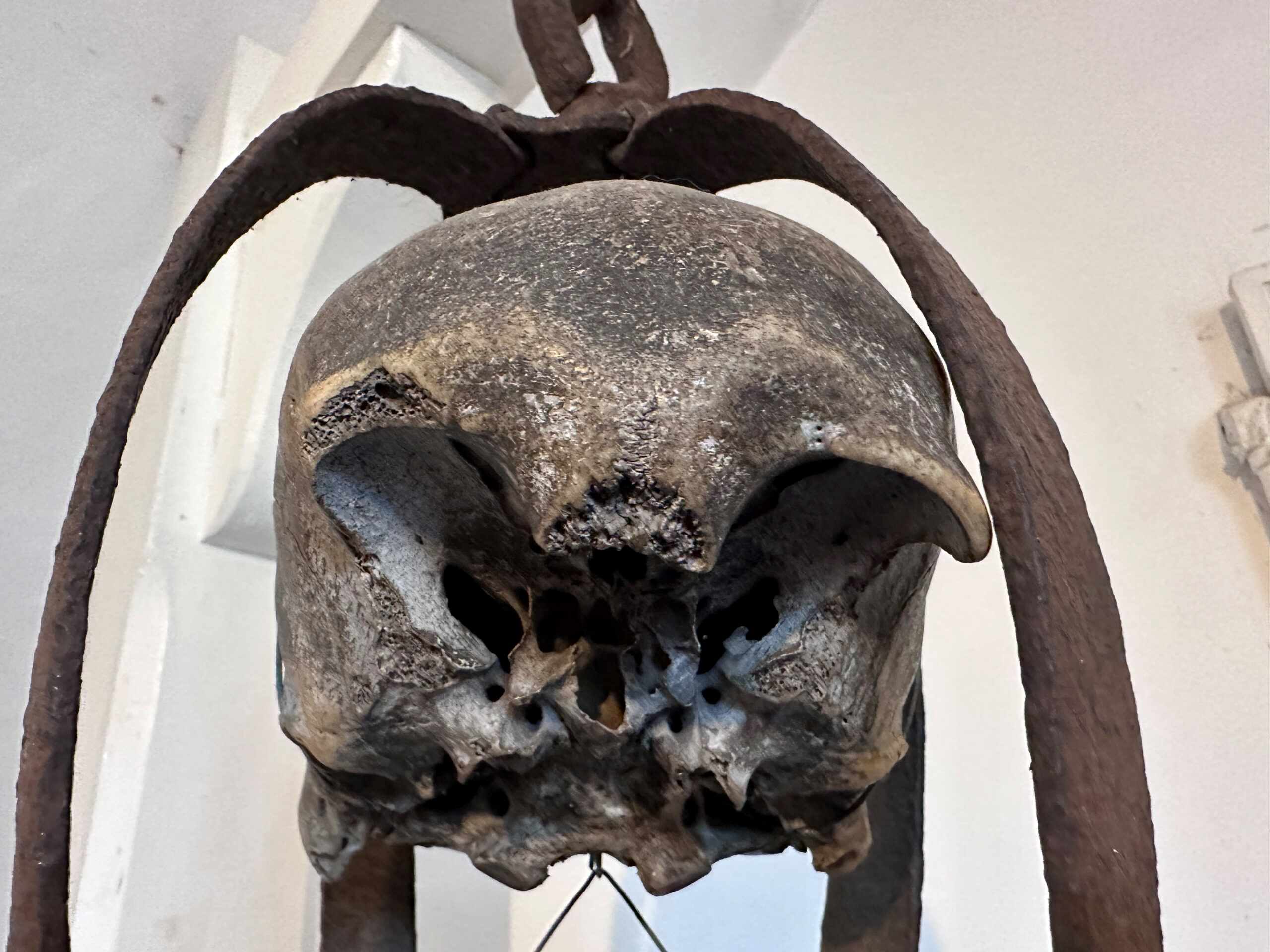
Gibbeting might sound like something out of a horror movie, but it was a real punishment used in the past. Imagine being locked in a metal cage and left to hang until you died. This gruesome practice was meant to deter others from committing crimes. Gibbets were often placed in public places, so everyone could see the consequences of breaking the law. While it may seem barbaric today, it was a common sight in many parts of the world. Curious about the history and facts surrounding this eerie form of punishment? Let's dive into 35 intriguing facts about gibbeting that will give you chills.
Key Takeaways:
- Gibbets were used in medieval Europe to display executed criminals as a warning. They were tall structures with rotating arms, and their use declined as attitudes toward punishment evolved.
- The legacy of gibbets reflects changing attitudes toward crime and punishment. While they were once effective deterrents, their abolition marked a step toward more humane justice systems.
What is Gibbet?
Gibbets were once a common sight in England and other parts of Europe. They served as a grim reminder of the consequences of crime. Here are some intriguing facts about these historical structures.
-
A gibbet is a gallows-type structure used to display the bodies of executed criminals as a warning to others.
-
The practice of gibbeting dates back to medieval times and continued into the 19th century.
-
Gibbets were often placed at crossroads or near the scene of the crime to maximize their visibility.
Historical Use of Gibbets
Gibbets played a significant role in the justice system of the past. They were not just tools of punishment but also instruments of public deterrence.
-
In England, gibbeting was officially abolished in 1834.
-
The bodies displayed in gibbets were usually left to decompose, which could take several months.
-
Sometimes, the bodies were coated in tar to slow down decomposition and make the display last longer.
-
The practice was not limited to England; it was also common in France, Germany, and other European countries.
Famous Cases Involving Gibbets
Certain cases involving gibbets have become legendary, often due to the notoriety of the criminals or the gruesomeness of their crimes.
-
One of the most famous cases is that of William Jobling, a miner who was gibbeted in 1832 for the murder of a magistrate.
-
Another well-known case is that of James Cook, a highwayman who was gibbeted in Leicester in 1832.
-
The last person to be gibbeted in England was James Cook, not to be confused with the highwayman, who was executed in 1832 for the murder of a shopkeeper.
Construction and Design of Gibbets
The design of a gibbet was both functional and symbolic. It was meant to be a stark reminder of the consequences of breaking the law.
-
Gibbets were typically made of wood and could be quite tall, sometimes reaching heights of 30 feet.
-
The structure often included a metal cage in which the body was placed.
-
Some gibbets had rotating arms, allowing the body to be turned to face different directions.
-
The cages were usually custom-made to fit the body of the executed criminal.
Public Reaction to Gibbets
Public reaction to gibbets was mixed. While some saw them as a necessary deterrent, others viewed them as barbaric.
-
Many people found the sight of a gibbeted body disturbing and would avoid the area.
-
Some communities protested against the erection of gibbets, arguing that they were inhumane.
-
Despite the controversy, gibbets were effective in deterring crime, at least according to contemporary accounts.
The Decline of Gibbeting
The practice of gibbeting eventually fell out of favor as attitudes toward punishment and justice evolved.
-
The rise of more humane forms of punishment, such as imprisonment, contributed to the decline of gibbeting.
-
Advances in forensic science and policing also made public displays of punishment less necessary.
-
By the mid-19th century, gibbeting was seen as an outdated and barbaric practice.
Modern References to Gibbets
Though gibbets are no longer used, they continue to capture the public imagination and appear in various forms of media.
-
Gibbets are often featured in historical novels and films set in medieval or early modern Europe.
-
Some museums have reconstructed gibbets as part of their exhibits on historical punishment.
-
The word "gibbet" is sometimes used metaphorically to describe a severe or public punishment.
Gibbets in Popular Culture
Gibbets have made their way into popular culture, often symbolizing the harshness of past justice systems.
-
The gibbet is a common trope in horror and gothic literature, symbolizing death and decay.
-
Video games set in historical or fantasy settings often include gibbets as part of their world-building.
-
Some modern artists have used the image of the gibbet in their work to comment on issues of justice and punishment.
Gibbets Around the World
While gibbets are most commonly associated with Europe, similar practices existed in other parts of the world.
-
In Japan, criminals were sometimes displayed in a similar manner, though the practice was less common.
-
In colonial America, gibbeting was occasionally used as a form of punishment.
-
Some African and Asian cultures also had practices that involved the public display of executed criminals.
The Legacy of Gibbets
The legacy of gibbets is a complex one, reflecting changing attitudes toward crime and punishment over the centuries.
-
Gibbets serve as a reminder of the harshness of past justice systems.
-
They also highlight the ways in which societies have evolved in their approach to punishment.
-
The abolition of gibbeting marked a significant step toward more humane forms of justice.
Interesting Tidbits About Gibbets
Here are some lesser-known facts that add another layer to the story of gibbets.
-
Some gibbets were designed to hold multiple bodies, making them even more imposing.
-
In some cases, the bodies of executed criminals were stolen from gibbets by friends or family members.
-
The word "gibbet" comes from the Old French word "gibet," meaning "gallows."
Final Thoughts on Gibbeting
Gibbeting, a grim practice from history, served as a stark warning to potential wrongdoers. It involved displaying the bodies of executed criminals in iron cages, often left to decay in public view. This method aimed to deter crime by showcasing the consequences of unlawful actions. Though it may seem barbaric today, gibbeting reflects the harsh realities of historical justice systems. Understanding these practices helps us appreciate the evolution of modern legal systems and the importance of humane treatment. While gibbeting is no longer in use, its legacy remains a fascinating, albeit macabre, chapter in the history of punishment. By learning about such practices, we gain insight into the societal values and norms of past eras, highlighting the progress humanity has made in the pursuit of justice and human rights.
Frequently Asked Questions
Was this page helpful?
Our commitment to delivering trustworthy and engaging content is at the heart of what we do. Each fact on our site is contributed by real users like you, bringing a wealth of diverse insights and information. To ensure the highest standards of accuracy and reliability, our dedicated editors meticulously review each submission. This process guarantees that the facts we share are not only fascinating but also credible. Trust in our commitment to quality and authenticity as you explore and learn with us.


